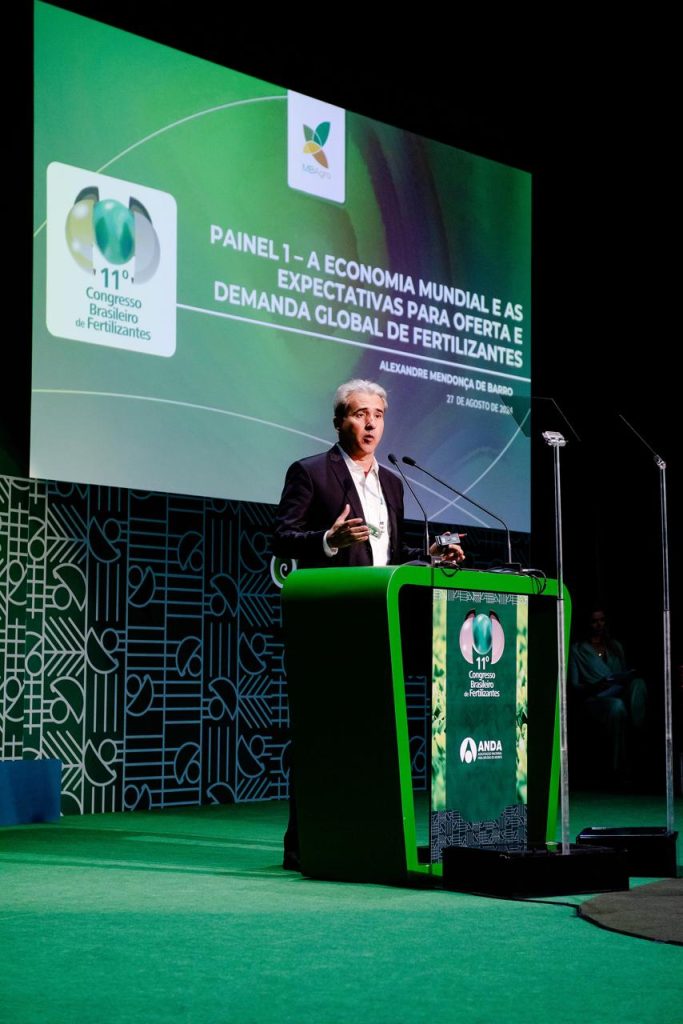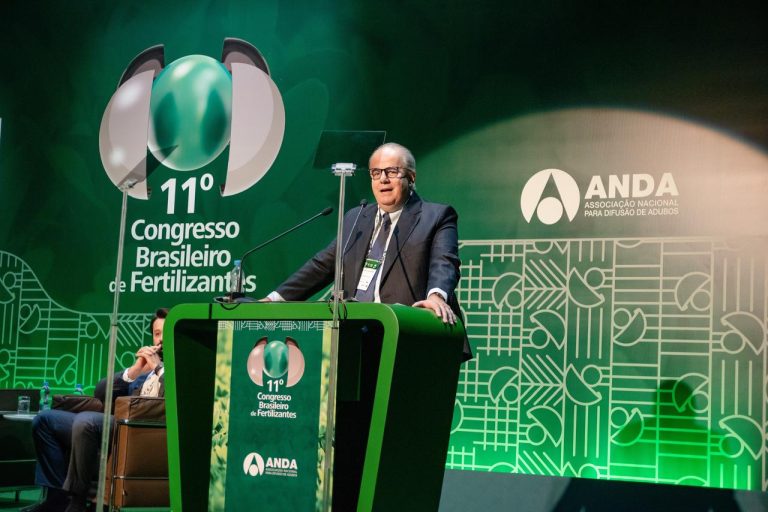São Paulo – Phosphate fertilizers have a new competitor in the market: battery production. This demand, coupled with a new direction in China’s export policy, are the two key factors that could influence the demand and price of fertilizers in the coming years, starting in 2025, according to industry experts at the 11th Brazilian Fertilizer Congress. The event was held on Tuesday (27) in São Paulo by fertilizer lobby ANDA.
Alexandre Mendonça de Barros, partner at MB Agro Consultoria, said during the panel “Global economy and expectations for global fertilizer supply,” moderated by Eduardo de Souza Monteiro, Chairman of ANDA, that the current landscape is characterized by concerns about a global economic slowdown, increased crop productivity, and a grain supply that does not jeopardize supply but is in fact strong. The current Brazilian harvest could reach 169 million tonnes and even contribute to a reduction in prices, the economist assessed.

“However, there are two challenges directly affecting the fertilizer sector,” said Barros. Both come from China. The first is a shift of phosphoric acid, derived from phosphorus and a base for making phosphate fertilizers and for electric car batteries. “It has a high value, but it seems to be directed towards batteries,” he said. Another challenge for the fertilizer sector is the overall reduction in fertilizer supply from China. “It doesn’t seem like there will be a shortage, but we are seeing instability, and I believe China will be more conservative with its exports,” he said, suggesting that China might be directing a larger portion of its fertilizers for domestic use.
Bruce Bodine, President and CEO of Mosaic Company, also assessed that the supply chain as “tight” due to the Chinese context and agreed that there is competition for phosphorus derivatives for electric car production. Fertilizers are primarily made from phosphorus, nitrogen, and potassium. However, Bodine pointed out there are opportunities for the sector, as the global population is growing and there will be a demand for a food-producing land equivalent to twice the size of India.
Jeferson Souza, Fertilizer Analyst at Agrinvest Commodities, also pointed to a shift in China’s export policies. By way of comparison, he said that in 2015 the Asian country exported 13 million tons of urea. This year through August only 900 thousand tons were exported.
Defense of local fertilizer industry

At the opening of the congress, Carlos Fávaro, Minister of Agriculture and Livestock, said Brazil needs to reduce its dependence on imported fertilizers, which account for nearly 85% of the fertilizers consumed in the country. To address this, Fávaro said the ministry is implementing measures to reduce bureaucracy and expedite domestic production, including the resumption of operations at a urea and ammonia production plant next year, as well as a new production facility by EuroChem.
“Fertilizer is a matter of national security,” he said while endorsing trade exchanges and imports, but he called for reduced dependency compared to current levels. According to estimates presented by Barros, Brazil is expected to consume 46 million tonnes of fertilizers this year, with 39 million tonnes of that being imported.
Jacyr Costa Filho, Chair of the Superior Agribusiness Council of the São Paulo State Industries Federation (Fiesp), argued that the national fertilizer industry needs to grow strategically, in locations with available transportation for the products and extensive logistical infrastructure. Former Minister of Agriculture and now professor at the FGV think tank, Roberto Rodrigues, was honored at the event for his contributions to agribusiness. Also present at the congress was State Agriculture Secretary Guilherme Piai.
Read more:
Phosphate fertilizer facility launched in Brazil
Translated by Guilherme Miranda




